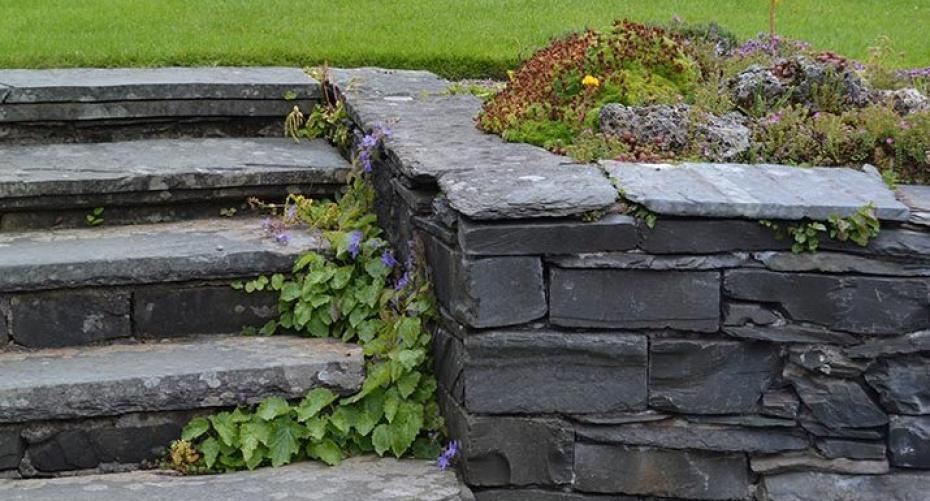Steps with alpine plants at Lakeland Horticultural Society, Holehird Gardens, Windermere, Cumbria
Follow our hints and tips for success growing alpines
Planting
- Traditional rockery limestone is now very hard to obtain and only comes from threatened habitats so please use a substitute such as sandstone or hypertufa, which you can make yourself from sand, fine chipped bark and cement.
- Fill the gaps between the rocks with the loam/ grit mixture as detailed below.
- Choose a sunny spot with free-draining soil and mix in a couple of handfuls of horticultural grit.
- If you are planting them in pots the most important thing to keep in mind is good drainage; so plant in a 2 parts loam based John Innes No 2 and 1 part horticultural grit mixture. Make sure there are plenty of drainage holes in the bottom; place a piece of crock over them to ensure they don’t clog with silt.
- Don’t use peat based compost as it holds too much moisture in winter.
- Place a layer of decorative grit around the plant; this stops the soil splashing onto the plant and keeps slugs and snails at bay.

Fritillaria michailovskyi
Aftercare
- Water after planting.
- Feed with a weak solution of a high potash fertiliser, such as Tomorite, in early spring. This will encourage more flowers to form whilst keeping the plant compact.
- Keep picking off spent flowers to encourage the plant to produce more.
- Many of the herbaceous perennials can be trimmed back after flowering if they are becoming too large.

Saxifrage x eudoxiana 'Hoogii'
Problems
- Outgrowing their space, becoming too big and lush, can result from too rich soil or over feeding.
- Rotting is the result of becoming too wet; either poor drainage in a container or not enough grit incorporated into the compost.
- They are subject to the usual garden pests so at the first signs spray with a systemic insecticide.
- Placing horticultural grit around the plant will deter slugs and snails.

Tulip 'Ancilla'
Varieties
- Take care when buying from garden centres as some alpine departments also include small perennials which will soon outgrow a rockery or trough.
- Succulents, such as sedums, sempervivums and delosperma, are the ultimate low maintenance plants as once they are planted they need virtually no looking after, unless there is a hard frost forecast in which case you may have to cover with a piece of horticultural fleece.
- You don’t need a rockery or even a garden as there are many varieties which will be quite happy growing in the crevices in the wall or between the paving stones. If you don’t have a garden you can always plant up an old sink or even a collection of broken clay pots. Watch the video and read the blog showing how to plant up an alpine trough.
- There is a huge variety of plants to choose from; tiny trees and shrubs, bulbs and herbaceous perennials. Sorbus reducta (Dwarf Mountain Ash) is worth seeking out but Daphne mezereum is widely available producing beautifully scented flower in early spring; it can reach 60cm (2’) but is unlikely if planted in a compost with very few nutrients. Beware of buying conifers labelled ‘small’ for a couple of pounds; true miniature trees and shrubs will be in tiny pots and can be around £10.
- Thymes are an excellent choice for planting between paving stones as they release a delicious aroma as you brush past them.
For more information on how to enhance your garden just get in touch with our Outdoor Plant team here in store.


